A Smithsonian Horticulturist Goes on a Quest for an Historic Seedling
A live oak tree from a South Georgia island community will one day enhance the grounds of the African American History Museum
/https://tf-cmsv2-smithsonianmag-media.s3.amazonaws.com/filer/54/8e/548ec29e-14a6-4d5b-a0c4-3b913fe0c3d3/brett_and_fred_sitting_in_tree.jpg)
Seven miles off the coast of Georgia is a remote and wildly pristine barrier island accessible only by ferry. . . . and special invitation. The island of Sapelo is a rugged and mysterious paradise. A relatively unchanged landscape and untouched natural wonderland, the island's sweetgrass marshes mingle with sweet-smelling sea air and its dunes and beaches are made iridescent by metallic sands.
Sapelo’s alligator-filled creeks and imposing forests of bladed palmetto, dense thickets of yaupon holly (Ilex vomitoria), tall slash pine (Pinus elliottii), and immensely humbling live oaks (Quercus virginiana) shrouded in Spanish moss are sign posts of Mother Nature’s dominion over this island.
Sapelo is also rich with historical and cultural significance. Inhabited for millennia by American Indians, the island was first visited by Spanish missionaries in the late 1500s, and was later colonized by British and French interests.
The island’s climate, sandy soils and wetlands made for exceptional conditions to grow cotton, rice and sugar cane—crops that were grown until the Civil War ended the plantation economy, and the island’s nearly 400 slaves were set free. The first enslaved Africans were thought to have been introduced by a French agricultural venture to raise cattle and harvest live oaks for shipbuilding. Remnants of this period on Sapelo still resonate in the foundation stones, earthworks and with the Sapelonians themselves.
I was on the island doing fieldwork as a Smithsonian horticulturist with the objective to identify and collect tree seedlings that could best embody the Islands rich heritage. The plan was for these native plants to be nurtured in the Smithsonian Greenhouse Complex until large enough for transplant to the grounds of the National Museum of African American History and Culture.
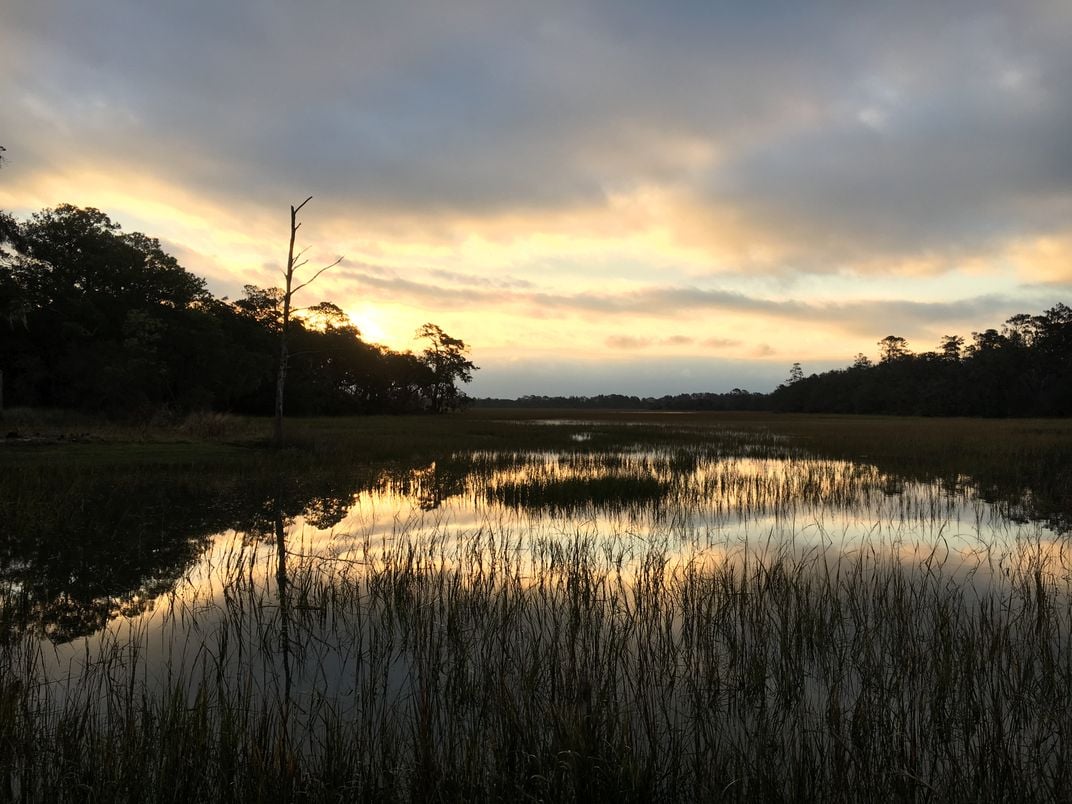
On the west side of the museum grounds is a landscape feature known as the Reading Grove. This space, comprised of sculpted benches beneath live oak trees symbolizes "Hope and Optimism," and is dedicated to group teaching and storytelling. This will be an ideal location to pay homage to this island and its peoples. The site is a microclimate where live oaks might thrive in a colder northern climate because at that location the garden is built above the museum’s underground galleries—a heat source to create the added thermal conditions that the trees need. The roots are nestled in a light, sandy soil that is used for rooftop gardening—also optimal for the trees' survival.
At just eleven miles long, and four miles wide, Sapelo is Georgia’s fourth largest sea island. During the reconstruction era, many of the emancipated Sapelonians purchased land and established permanent settlements, including the tiny village of Hog Hammock. Today, almost all of the island belongs to the State of Georgia as a wildlife management area, and the 6,000-acre Sapelo Island National Estuarine Research Reserve.
Hog Hammock is the last remaining town on Sapelo Island, and its few residents serve as the guardians of their extraordinary history and unique Saltwater Geechee culture. The name “Geechee” is thought to have come from a West African tribe-the Kissi (pronounced “Gee-zee”), who populate the area of modern-day Sierra Leone, Liberia and Guinea. The word Saltwater refers, of course, to island living, and to the unique cadence in the language that is different from the “Freshwater Geechee” common to the mainland. The island’s isolation means that many cultural traditions have retained roots to West Africa; these traditions have gained the attention of anthropologists, scholars, artists. . . . and now horticulturists.
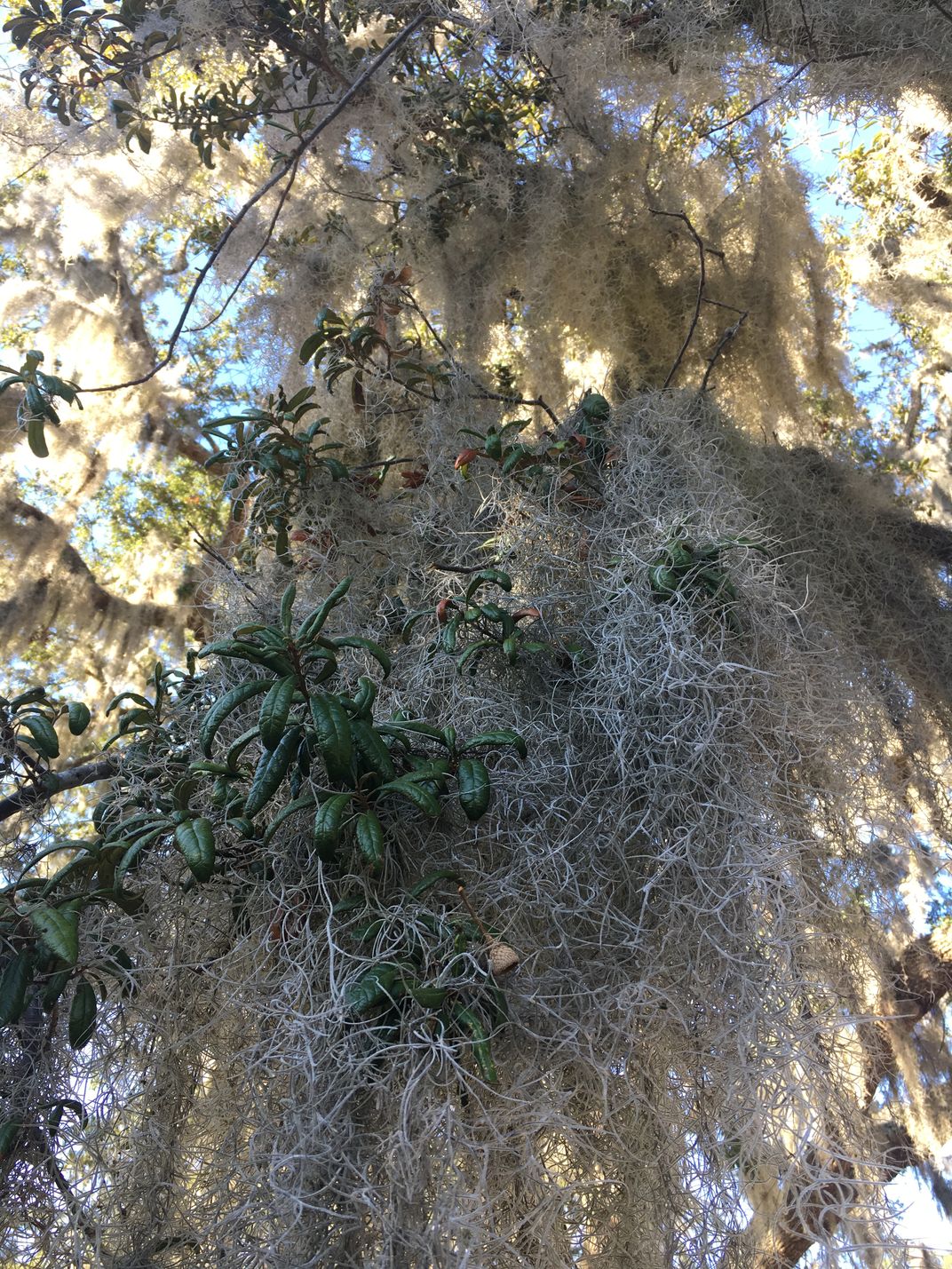
The invitation onto Sapelo Island came from Fred Hay, the island manager with the Georgia department of natural resources, who introduced me to Maurice Bailey—a prominent leader of Hog Hammock and the son of cultural ambassador Cornelia Walker Bailey, who passed away last October. Bailey rose to prominence within the Geechee community for her work as an author and storyteller sharing with the world the heritage of her people and the island.
Maurice Bailey has a wonderfully melodic rhythm to his speech and he’s quick to laugh, with an uncanny ability to make fast friends. The day started just after sunrise with a cup of hot coffee to help shake off the morning cold. We jumped in a jeep and drove around Hog Hammock where Bailey shared stories of his experiences growing up on the island. As a child, his time was spent fishing and collecting oysters, and exploring the forests, marches and endless beaches—a glorious playground.
Almost everything is brought onto or off the island by ferry, a barge, or private boats. To attend school, Bailey and the other Sapelo children had to take a ferry to the mainland. Refrigeration is a relatively new addition, and Bailey’s childhood recollections of storing food underground, canning and the community coming together to butcher an animal provided this visitor with deep insight into life on Sapelo.
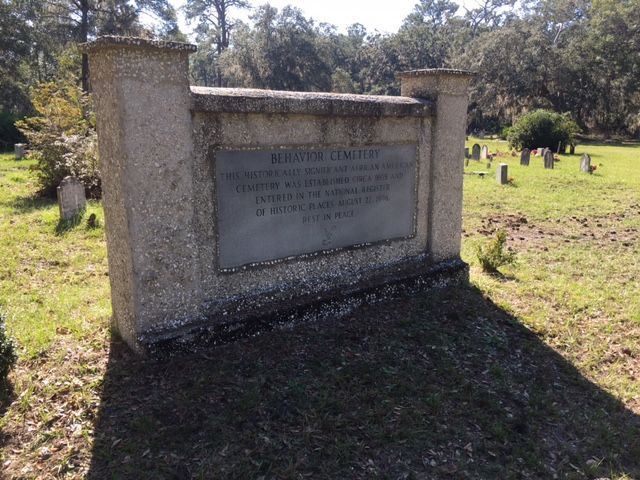
We arrived at Behavior Cemetery to visit the resting place of Cornelia Bailey. The name of the cemetery is thought to have originated from a story of a defiant group of newly arrived enslaved Africans who escaped into the nearby woods. According to legend, they were left, unpursued, until ready to “behave” themselves and come out of the forest.
Later, “Behavior” became the name of a community and a cemetery—a tribute to this courageous and defiant act. In 1996, Behavior Cemetery was listed on the National Register of Historic Sites. The island's hallowed ground is now permanently preserved.
For more than 200 years, Bailey’s ancestors and the descendants of the Sapelo communities resided in this special place and were buried in the Islamic practice with feet pointed to the East. Bailey attributes this cultural tradition to one man, an enslaved African by the name of Bilali Muhammad, an Islamic scholar from West Africa.
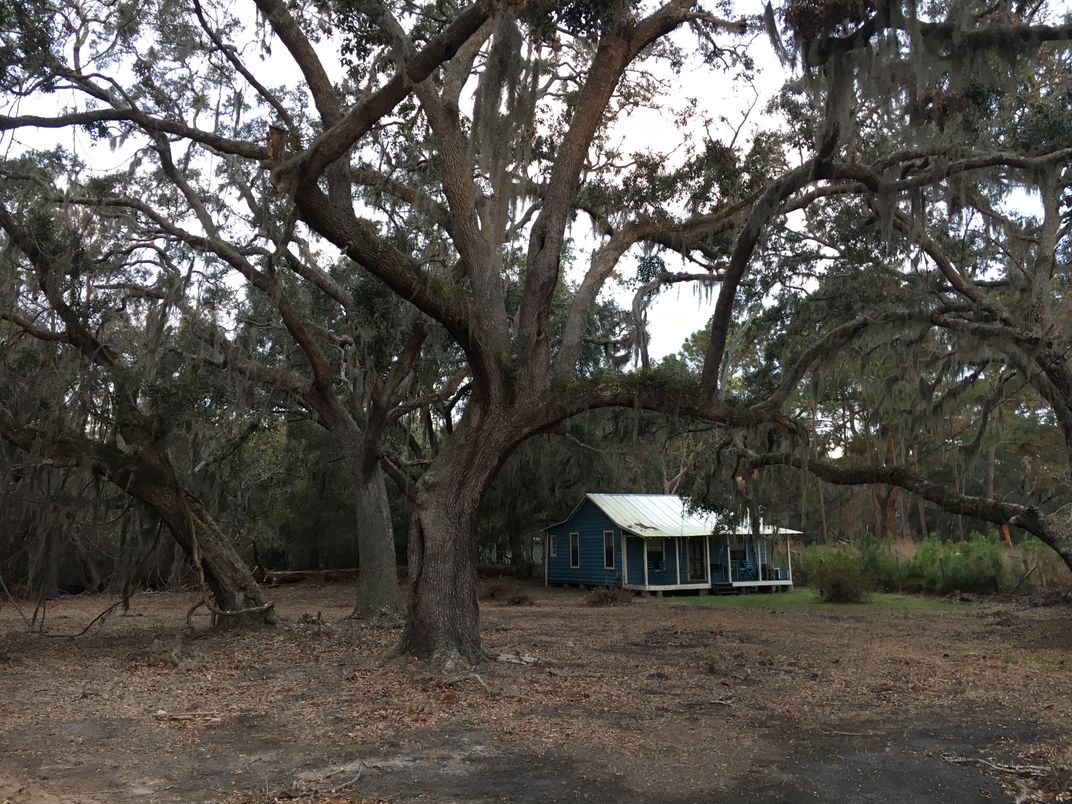
For his leadership and agricultural skills, Bilali became the overseer for as many as 500 enslaved people on the island’s Spalding Plantation, which was once one of the largest plantations in Georgia. He wrote the Bilali Muhammad Document, which is thought to be the first Islamic text written in America. Islamic traditions, later mixed with those of Baptist christianity and West African practices created a distinctive cultural identity on Sapelo Island. Bailey is a descendent of Bilali Muhammad and, in many ways like his ancestor, leads the Sapelonians today.
The next stop was back to the dock to meet Fred Hay at the morning ferry. Hay is right out of central casting for the role of Hollywood naturalist. His wind-blown sandy hair, hiking boots, and canvas shorts made this light jacket-clad Washingtonian rethink his hardiness on this blustery 50-degree morning. We traveled a few miles to the Long Tabby Post Office which overlooks beautiful Barn Creek and the ruins of an 1800s sugar cane mill.
To my delight, the tiny post office displayed sheets of the newly issued stamps containing the iconic photo of the National Museum of African American History and Culture (and its emerald green lawns). We had a long chat about the tree project. Bailey received a phone call to take care of some business as a cruise ship was scheduled to arrive later in the day, an opportunity to share Sapelo culture with outsiders and valued source of revenue. Following Bailey’s departure, Hay took me out to see the research reserve.
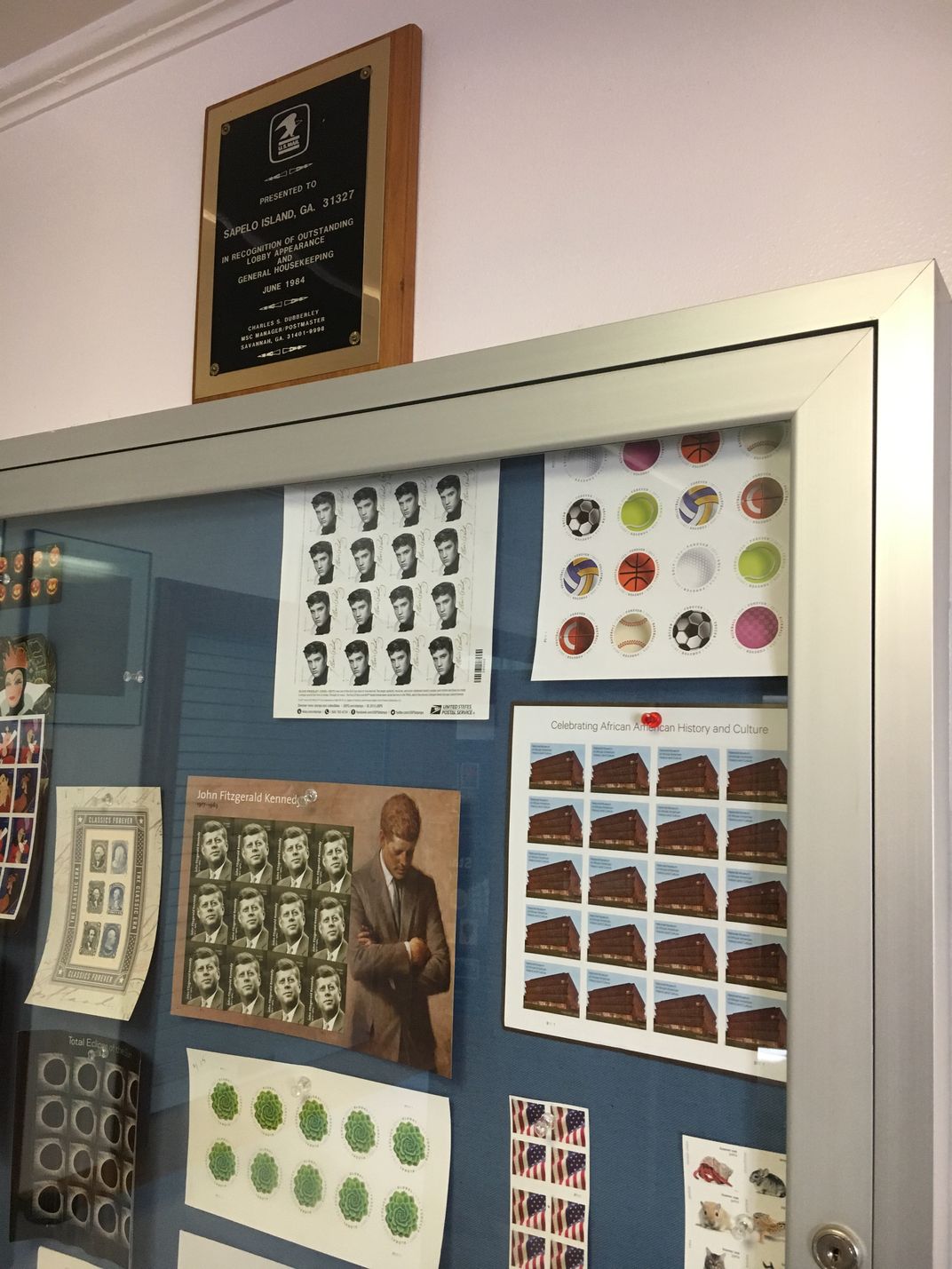
With boundless energy and a clear love for Sapelo and its natural splendor, Hay led us through the woods in search for plants we discussed at the post office. The long trail led through the various ecosystems, where Hay pointed out landscape features while plucking and offering up exotic vegetation to taste and smell. The bounty of miniature crabs, oysters, birds and other fauna was staggering. The trail ended at the beach, and an interpretive sign containing a quote from Cornelia Walker Bailey beautifully expressing a deeper meaning of this land and their ancestors.
I am Sapelo and all the hundreds of others who are descendants: we who remain her is Sapelo. We are one, bound by the spirit of an island and Bulallah the slave. Bound by high tide, fields, gossips, smoke, mullet, and our faith.
Hay spoke of a catastrophic hurricane that demolished the island in 1893 with high winds and a storm surge that crested over 16 feet. We passed through a break in the sand dunes and were led down a dark forest path. Looking up, we were actually in the canopy of a massive live oak (Quercus virginiana). The colossal limbs spread 40 feet in each direction, but the trunk was almost completely buried. This sand dune was pushed a quarter mile inland by the powerful hurricane, but despite this the tree survived. The tree was covered with life; Spanish moss and resurrection ferns clung to the tops of its lower limbs and a red lichen, called blood lichen, was splattered up the side of the protruding trunk.
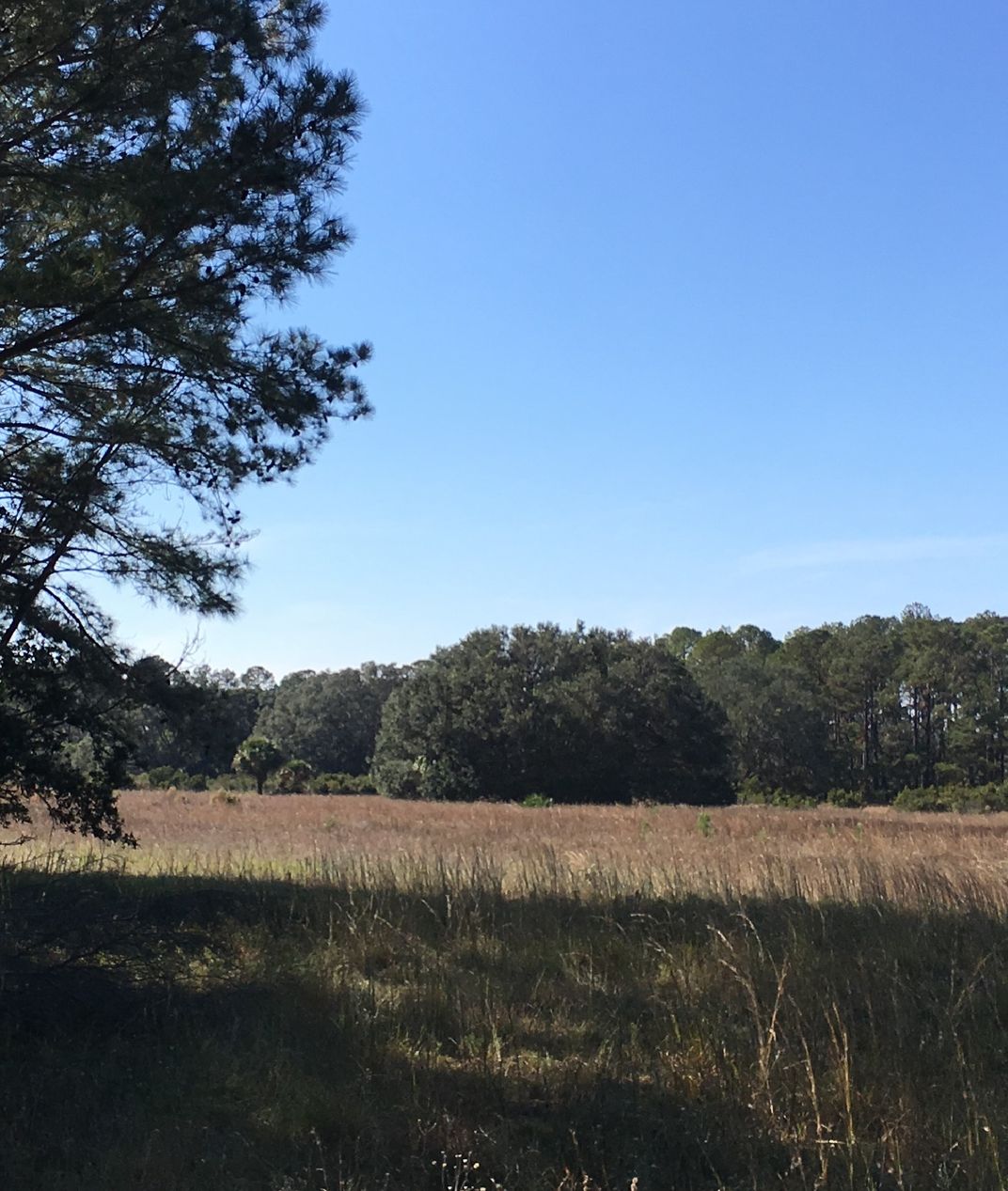
The island tour continued and we came to a large open field that was once farmed for cotton and sugar cane. On the edge of the field was another gigantic live oak. Its muscular branches extending far, they seemed to protect a small community of palmetto in its shadow. Spying numerous seedlings, we stopped to collect them. It was early afternoon, and the heat of the day pushed out the cool morning air. Sitting back on our heels to take a quick break, it occurred to us that 200 years ago we would have been sharing the shade of this tree with the Spalding slaves who were made to work in this field.
Next, I met Yvonne Grovner, an interpretive ranger with the Sapelo Island National Estuarine Research Reserve. As an authority on the cultural and biological features of the island, she is also one of the finest sweetgrass basket makers of the United States. Her work was featured at the inauguration of President Barack Obama, and she is regularly approached by art schools to host studio sessions for aspiring artists. Grovner had only a short time to share as the cruise ship was arriving shortly, and it was her job to host the visitors and educate them about the importance of the island as a cultural and ecological treasure. We collected some sweetgrass rhizomes, then on our way back to find Fred Hay, she quickly stopped the truck and backed up. Ready to see a plant, I was surprised when she instead pointed out a 12-foot-long alligator.
We reconnected with Bailey on the deck of his store, Graball Country Store. He shared more stories about growing up on the island, and explained that the Hog Hammock community is facing a new challenge with limited job opportunities, a shrinking population, outsiders building vacation homes, rising property taxes and pressures to sell land.
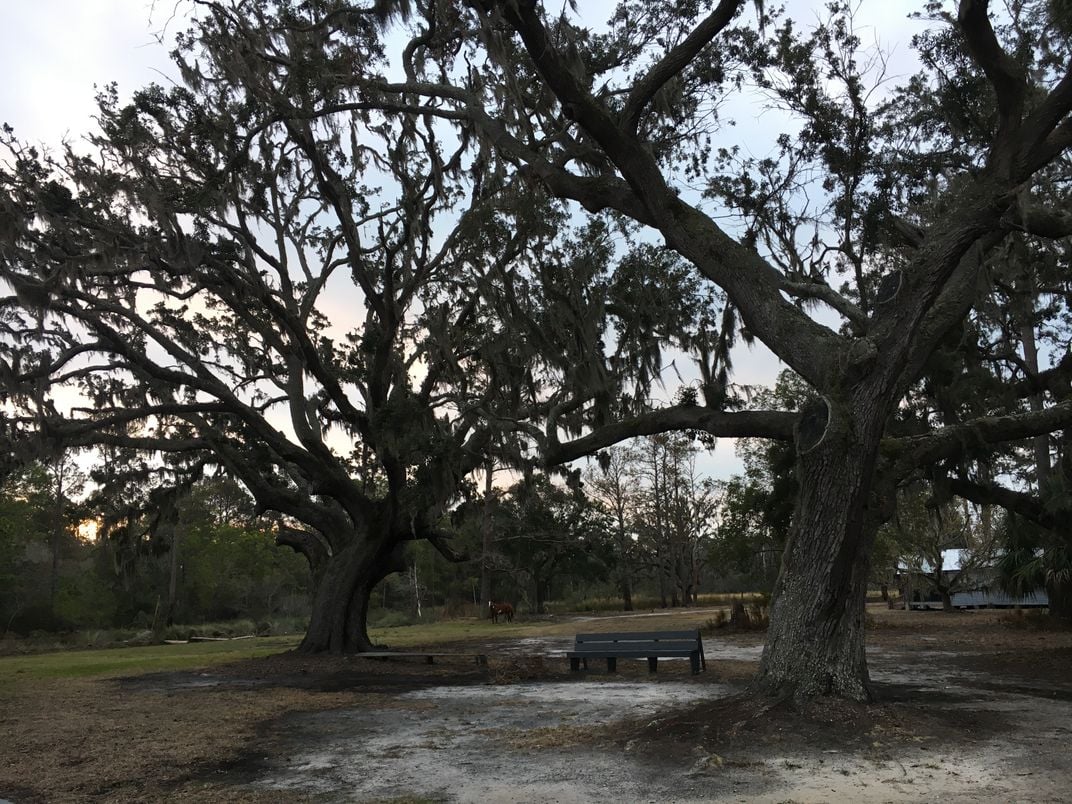
The future of Hog Hammock is uncertain, but residents like Maurice, Yvonne, the work of Cornelia Walker Bailey and others are committed to keeping the Sapelo heritage and stories alive. Bailey told us of a weekly potluck he started to bring the Hog Hammock Community together with the new residents—mainlanders—who have been moving onto the island. Hopefully, by bringing different people together, maybe they can find common ground while trading stories over some good food under the shade of a live oak tree.
That’s when I knew I’d made the right decision to bring back to Washington a live oak to symbolize the Hog Hammock community—a tree that provides shelter, as well as the resiliency, strength, and the hope of a people.
Live oaks produce acorns and the lucky ones will sprout into trees. The seedlings that I collected were dug out of the sandy soil. They have one or two true leaves, some remnants of the acorn, and the tap root. It was a challenge to find viable seedlings for a number of reasons. First, the island was still recovering from hurricane Irma which, in September, pushed a surge of ocean water onto the island. This salt water damaged many seedlings, washed away acorns, and otherwise impacted the plants on the ground. Second, those that survived were grazed upon by the deer, insects and other animals searching for food in a storm damaged island. To find seedlings at these important locations was very much a product of luck, or perhaps it was fate?
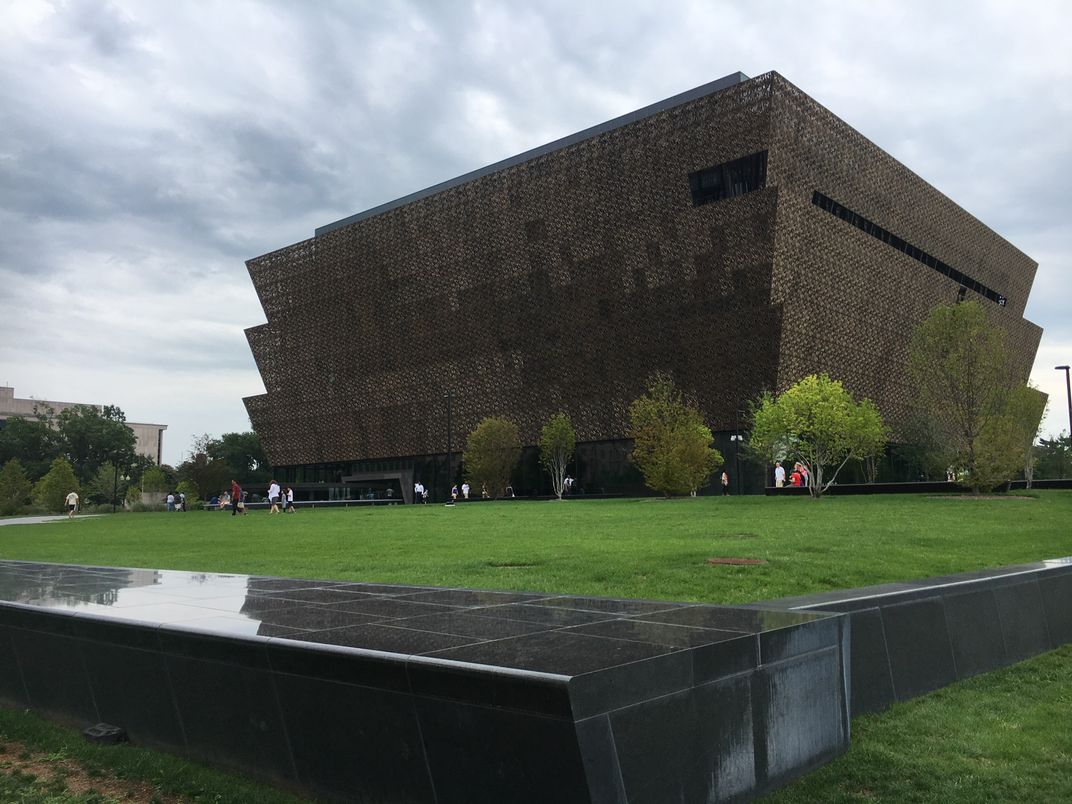
Once the seedlings were dug, I quickly wrapped the roots in damp paper towels and placed them in plastic specimen bags. They were later carefully inserted into a clear plastic mailing tube for protection from damage when traveling back to the Smithsonian.
The seedlings have been potted in a soilless growing medium and will live in a protected and temperature controlled greenhouse space where we can expect them to grow about 12 inches each year. The acorns of the live oak do not require a stratification process like some other seeds. Stratification is a process used to start germination by simulating a natural requirement, such as soaking, fire, scuffing the seed coat, digestion, etc. With a little more luck, these planted acorns may also grow.
With the seedlings and acorns collected, it is our hope to one day host a ceremonial tree planting on the grounds of the National Museum of African American History and Culture with members of the Sapelo Island community.
/https://tf-cmsv2-smithsonianmag-media.s3.amazonaws.com/accounts/headshot/Picture1.jpg)
/https://tf-cmsv2-smithsonianmag-media.s3.amazonaws.com/accounts/headshot/Picture1.jpg)